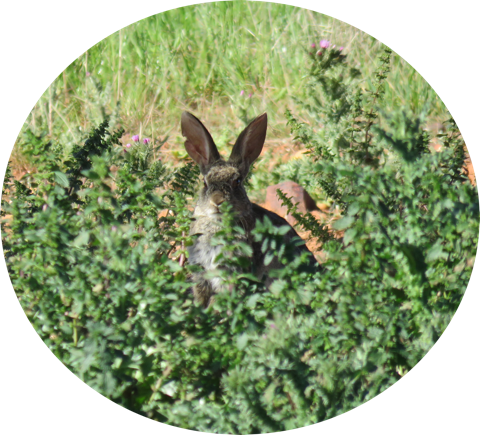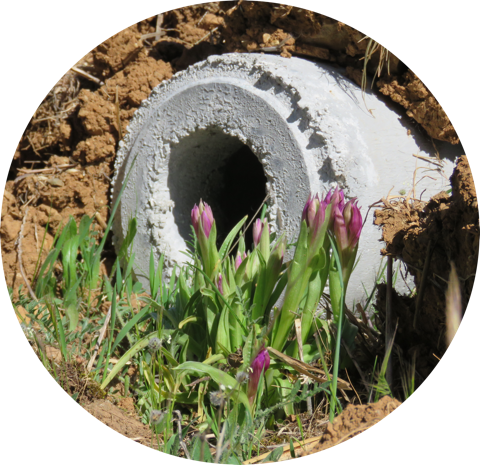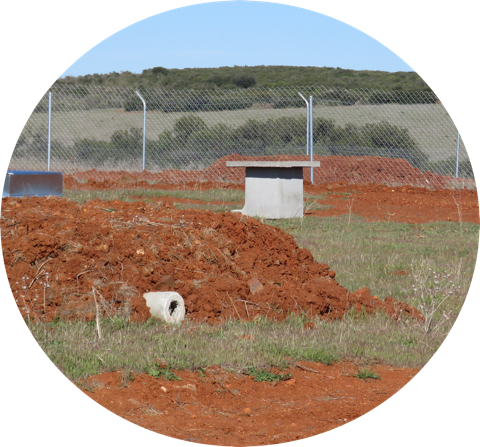GOOD MANAGEMENT
PRACTICES
The strengthening of rabbit populations is a complicated process that depends on many variables differing from area to area, and so when reintroducing rabbits care must be taken to bear in mind all the characteristics of each particular factor. Population reinforcements require significant investment and long-term planning, which must include actions designed to maintain populations once the population has been strengthened.
It is also important to analyse where the species is present since the most viable course of action is to strengthen an existing population. It can be assumed that the required ecological conditions already exist in areas where there were once dense rabbit populations in the past. However, the causes of the disappearance of rabbits from these areas must be ascertained to check whether or not the causes of these population declines are still operating and/or whether or not they are reversible.
Rabbits require habitat mosaics and/or ecotones that provide them with both food and shelter. This means that key to rabbit recovery is the identification and/or creation of mosaics of patches of scrub, rocky areas and bare soil mixed in with natural pastures and cultivated land. As well, any potential rabbit-recovery zone must have enough natural sites offering shelter and a soil in which they can excavate their warrens in and amongst the natural elements of the landscape.

INCREASE IN THE AVAILABILITY OF FOOD SOURCES
The aim of the project is to create habitat mosaics with plentiful trophic resources in areas with scrub cover and a shortage of food. To do so, small irregular-shaped plots – no more than 40 m across – need to be created. This type of landscape structure promotes herbaceous vegetation growth and in doing so fosters rabbit populations.
Scrub clearance
The objective of scrub clearance is to increase landscape diversity, above all within dense scrubland patches. This becomes necessary when then the scrub cover exceeds 60–70% in the designated plots or wherever there are large dense extensions of scrub that need to be opened up to encourage rabbit populations to expand.
In all the plots scrub clearance aims to create irregular-shaped sinuous patches that maximize the length of plot edges (ecotones), a key factor that encourages rabbit populations to spread.
It must be remembered, nonetheless, that scrub is important for rabbits and so should not be cleared excessively. Patches of scrub must be left between patches and between other landscape elements to provide rabbits with shelter where they need it.
Sowing
Sowing seeds to increase rabbit productivity may be worthwhile in areas with little plant cover. As well, if the cleared plots are sown, scrub encroachment is delayed. The best seed mixture consists of cereals mixed with legumes – for example, vetch and oats – which provides food at different times during the breeding season. Legumes also contain proteins that are important during the breeding season.
In areas where cattle or wild ungulates graze, it is worthwhile installing electric fences to protect sown plots. Rabbits can pass under the wires to feed on the fresh shoots. In summer, the fences can be removed so that the cattle can feed on the by-then tall plants, thereby providing a double benefit.
INCREASE IN THE AVAILABILITY OF SHELTER
It is imperative to provide shelter in areas where the scrub cover is poor or where the soil is difficult to excavate to any depth. In very open areas, natural patches of scrub and hedgerows between fields must be encouraged; as well, unploughed areas can be left, scrub species can be allowed to flourish, and piles of stones and soil can be allowed to accumulate.
The artificial construction of warrens will also favour rabbit populations, not only in open areas but also in upland areas, and act as additional protection against predators.

Construction of artificial warrens
- Thermally insulated
- No condensation
- Protected against flooding
- Durability
Habitat piles
Habitat piles consisting of a covering of dead branches can protect the surfaces of rabbit warrens. This additional cover provides greater protection against predation and stops predators from excavating warrens in search of kittens. They also provide extra thermal protection.
If pruning or scrub clearance take place, the cut branches can be piled up to protect both artificial and natural warrens. When branches are placed over the warren, care must be taken not to block the entrances.

MAINTENANCE
Most conservation actions for rabbits are relatively successful for the first 2–3 years but then tend to diminish in effectiveness if maintenance work is not performed.
Thus, it is essential to include in the project provisions for the maintenance of the actions that have been undertaken. The high productivity of rabbit populations tends to lead to the belief that, once established, their numbers are self-sustained. However, for this to be true, it is necessary to maintain the conditions that allowed the rabbits to thrive in the first place. Thus, plots must continue to be sown and ploughed if necessary, further clearance must be performed if the scrub encroaches too far, and damaged warrens must be repaired and new habitat piles created.


